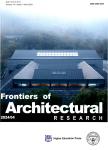A typology of clustered housing for older adults towards opportunities for social interaction:A case study of Dutch social housing
作者机构:Research Group Architecture in HealthHAN University of Applied SciencesArnhemthe Netherlands Chair Smart Architectural TechnologiesEindhoven University of TechnologyEindhoventhe Netherlands
出 版 物:《Frontiers of Architectural Research》 (建筑学研究前沿(英文版))
年 卷 期:2024年第13卷第3期
页 面:561-574页
核心收录:
学科分类:081302[工学-建筑设计及其理论] 08[工学] 0813[工学-建筑学]
基 金:This article was written as part of a collaborative research project between the housing association Woonzorg Nederland(contributes financially) HAN University of Applied Sciences(Research Group Architecture in Health) and Eindhoven University of Technology(Chair Smart Architectural Technologies).The data presented was collected in collaboration with Woonzorg Nederland.Our special thanks go to our colleagues at Woonzorg Nederland including all building managers of Woonzorg Nederland who contributed to the research
主 题:Clustered housing Typology Seniors Social housing
摘 要:Dutch housing associations are dealing with a growing number of tenants who are ageing in ***,there is a lack of suitable housing that meets the(social)needs of this target *** housing,which offers a socio-spatial context that facilitates encounters between residents,is considered a promising housing concept to(partly)fill this ***,clustered housing is a broad concept consisting of a variety of housing types that differ from each other in the extent to which people“live together.Still little is known about which types of clustered housing can be distinguished in relation to the potential for social ***,in this article we distinguish between types of clustered housing based on social,organizational,and spatial building *** have mapped these characteristics by combining real estate data of housing association Woonzorg Nederland with survey data collected among their building *** on this dataset,an explorative cluster analysis was performed,resulting in four types of clustered ***,further exploration of the data shows that,from the perspective of building managers,residents of certain types of clustered housing interact more often and feel more connected with each other than residents of non-clustered housing types.



